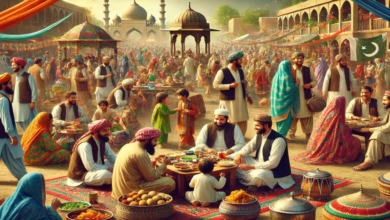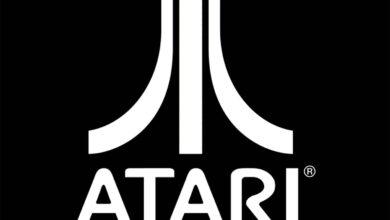Mystique of St Lazarus Abba Qui Cuban: A Fusion of Faith and Healing

Few figures are as revered in the rich tapestry of Cuban spiritual life as St Lazarus Abba Qui, also known as Babalu Aye in the Afro-Cuban religion of Santería. This enigmatic figure embodies the syncretism of Catholic and Yoruba beliefs, standing as a beacon of healing and hope. This article explores the deep cultural and religious significance of St Lazarus Abba Qui Cuban, illustrating his enduring influence in Cuba and beyond.
The Historical and Spiritual Background of St Lazarus Abba Qui
In the Christian tradition, St Lazarus is known for his biblical resurrection by Jesus. This story of revival has profound implications in Cuban spirituality, where Lazarus is syncretized with the Yoruba deity Babalu Aye. Babalu Aye is associated with illness and healing, particularly diseases of the skin and bones. This fusion of identities forms a unique aspect of Cuban religious practice, where the line between Catholic saint and Yoruba orisha blurs into a comprehensive figure of St Lazarus Abba Qui.
Cultural Significance and Celebrations
Annually, on December 17th, Cuba lights up to celebrate the feast day of St Lazarus, an event that transcends mere religious ritual. This day is marked by a pilgrimage to El Rincón, where thousands of devotees engage in acts of devotion—some crawling on their hands and knees, others offering flowers and lighting candles at his shrine. These practices signify spiritual devotion and reinforce communal bonds and cultural heritage.
Rituals and Offerings
St Lazarus’s worship is characterized by various rituals reflecting Cuban spirituality’s syncretic nature. Devotees often set up altars in their homes, offering candles, flowers, and food. These offerings are believed to bring healing and protection from the saint. Additionally, during his feast day, rituals include animal sacrifices and vibrant dances that echo the African roots of Santería.
The Role of St Lazarus in Healing and Community Support
St Lazarus is a spiritual figure and a symbol of healing and resilience. Many Cubans turn to him in times of illness, believing in his power to heal physical and emotional ailments. This belief is deeply embedded in the community, where stories of miraculous healings by St Lazarus are commonly shared. Beyond individual healing, the rituals and celebrations associated with St Lazarus provide emotional comfort and foster a sense of community among his
Global Influence and the Cuban Diaspora
The veneration of St Lazarus extends far beyond the shores of Cuba. In cities like Miami, where there is a significant Cuban population, the tradition of honouring St Lazarus continues with enthusiasm. The global spread of his devotion through the Cuban diaspora highlights the enduring appeal of St Lazarus and the cultural resilience of Cuban spiritual practices.
Conclusion
St Lazarus Abba Qui Cuban stands as a powerful testament to the enduring spirit of Cuban culture and spirituality. He bridges the gap between two worlds—Catholicism and Yoruba religion—serving as a symbol of hope, healing, and unity. His annual celebration is a profound event that underscores the syncretic nature of Cuban religious identity and its impact on community cohesion and individual faith. As Cuban culture continues to influence global communities, the legacy of St Lazarus Abba Qui remains a beacon of cultural pride and spiritual solace.
Frequently Asked Questions about St Lazarus Abba Qui Cuban
Who is St Lazarus Abba Qui Cuban?
St Lazarus Abba Qui Cuban, also known as Babalu Aye in the Santería religion, is revered in Catholic and Afro-Cuban religious traditions. He is associated with healing, particularly of illnesses related to the skin and bones.
What is the significance of December 17th about St. Lazarus?
December 17th is celebrated as the feast day of St. Lazarus. This day is marked by significant rituals and a pilgrimage to El Rincón in Cuba, where thousands of devotees participate in acts of devotion to honour St. Lazarus for his healing powers and protection.
What are some everyday rituals and offerings made to St. Lazarus?
Devotees often offer candles, flowers, food, and sometimes animal sacrifices as part of their veneration of St. Lazarus. These offerings, made at home altars or during the annual pilgrimage, reflect their requests for healing and protection.
How does St Lazarus Abba Qui Cuban reflect the syncretism of Cuban religious practices?
St Lazarus embodies the fusion of Catholic and Yoruba beliefs, evident in his dual identity as a Catholic saint and a Santería orisha. This syncretism is a hallmark of Cuban spirituality, blending elements from different religious traditions into a cohesive practice.
Why do some devotees crawl or carry heavy objects during the pilgrimage?
Crawling on hands and knees or carrying heavy crosses during the pilgrimage to El Rincón are acts of repentance or devotion, symbolizing the devotees’ earnest supplications or thanksgiving for favours received through St. Lazarus’s intercession.
You May Also Read: Thezburg Voodoo: Unveiling the Mysteries and Cultural Richness




